
- Home
- Travel Packages
- Top Destination
-
Travel Attraction
By Category
Top Attraction

- Travel Agents
- Car Rentals
- Hotels
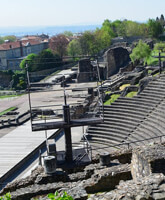
The Gallo-Roman Museum of Lyon-Fourvière is an archaeological museum that showcases the rich history of Lyon from its Roman past. Located near the ancient Roman theatres, it is a must-visit for history enthusiasts. How to Reach Gallo-Roman Museum, Lyon The museum is easily accessible through multiple transport options: By Metro: Take Line D to Vieux Lyon and then a short walk uphill. By Bus: Several bus routes stop near the museum. By Foot: Enjoy a scenic walk from the Fourvière Basilica. Weather in Lyon The climate in Lyon varies throughout the year: Spring (March-May): Pleasant and mild temperatures. Summer (June-August): Warm and dry, often reaching 30°C. Autumn (September-November): Cool and occasionally rainy. Winter (December-February): Cold with rare snowfall. Timing and Entry Details The museum is open daily except on Mondays. Entry fees apply, but discounts are available for students and seniors. Why is Gallo-Roman Museum Famous? The museum is well known for: Its extensive collection of Roman artifacts. The famous Lyon Tablet, an ancient bronze inscription. Being located next to Lyon's Roman theatre ruins. History and Architecture The museum was designed by architect Bernard Zehrfuss and opened in 1975. It is partially built underground to blend with the ancient ruins, and it houses relics from the Roman city of Lugdunum. Things to Do at the Gallo-Roman Museum Explore the Exhibits: View mosaics, statues, and ancient tools from the Roman era. Visit the Roman Theatre: Step into the past with the adjacent well-preserved amphitheater. Enjoy Interactive Displays: Learn about Lyon’s Roman history through engaging multimedia exhibits. Attend Cultural Events: The museum often hosts lectures and temporary exhibitions. Interesting Facts about Gallo-Roman Museum The museum is partially built underground to preserve the landscape. It houses one of the oldest known Roman mosaics in France. The Lyon Tablet contains a speech by Emperor Claudius. It is part of the Fourvière archaeological site, a UNESCO-listed area. Tips for Visiting Visit early to explore without crowds. Combine your visit with a trip to the nearby Fourvière Basilica. Check for temporary exhibitions for unique experiences. Wear comfortable shoes, as the site has uneven terrain.
Explore More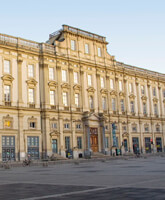
The Museum of Fine Arts of Lyon (Musée des Beaux-Arts de Lyon) is one of the most significant art museums in France, housing an extensive collection of paintings, sculptures, decorative arts, and antiquities. How to Reach Museum of Fine Arts of Lyon You can reach the museum through various transportation options: By Metro: Take Metro Line A and get off at Hôtel de Ville - Louis Pradel station, which is a short walk from the museum. By Bus: Several bus lines stop near the museum, including lines C3, C5, C13, and C18. By Foot: The museum is located in central Lyon, making it easily accessible on foot from major landmarks. Weather in Lyon Lyon has a temperate climate with distinct seasons: Spring (March-May): Mild temperatures with blooming flowers. Summer (June-August): Warm and sunny, ideal for sightseeing. Autumn (September-November): Cooler temperatures with colorful foliage. Winter (December-February): Cold but suitable for museum visits. Timing and Entry Details The museum is generally open from Tuesday to Sunday, with opening hours from 10 AM to 6 PM. It is closed on Mondays and public holidays. Entry fees vary, with discounts available for students and seniors. Why is the Museum of Fine Arts of Lyon Famous? The museum is well known for: Its impressive collection spanning from ancient Egyptian artifacts to modern art. Masterpieces from renowned artists such as Rembrandt, Monet, Picasso, and Rodin. Being one of the largest and most prestigious museums in France. History and Architecture The museum is housed in a former Benedictine convent dating back to the 17th century. Over the centuries, it has undergone numerous renovations to accommodate its growing collection. The building itself is a beautiful example of classical architecture with a stunning courtyard garden. Things to Do at the Museum of Fine Arts of Lyon Explore the Art Collections: Discover works from ancient civilizations to contemporary art. Visit the Sculpture Gallery: Admire stunning sculptures, including works by Rodin. Relax in the Garden: The museum’s inner courtyard is a peaceful retreat. Attend Temporary Exhibitions: The museum frequently hosts special exhibitions and events. Interesting Facts about the Museum of Fine Arts of Lyon The museum has over 70 rooms filled with art from various periods and cultures. It is considered one of the most important museums in Europe. The museum was established in 1801 and has continuously expanded its collection. It has one of the largest collections of sculptures in France. Tips for Visiting Plan at least 2-3 hours to explore the museum fully. Visit early in the day to avoid crowds. Check for temporary exhibitions for unique art experiences. Take advantage of free admission days if available.
Explore More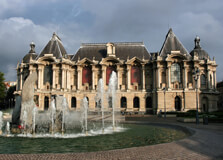
The Palais des Beaux-Arts in Lille is one of the most remarkable museums in France and is often considered the jewel of the city’s rich cultural heritage. Established in the 19th century, this grand museum offers visitors a chance to dive deep into the history of European art. From classical to modern art, it showcases an impressive range of works from various periods and regions. Whether you're an art enthusiast or a first-time visitor, the Palais des Beaux-Arts provides an enriching experience in the heart of Lille. How to Reach Palais des Beaux-Arts, Lille The Palais des Beaux-Arts is located in the city center of Lille, making it easily accessible from various parts of the city. If you're traveling by train, you can arrive at either Lille Flandres or Lille Europe stations, both of which are within walking distance from the museum. From Lille Flandres station, it's just a 10-minute walk to the museum. You can also take public transport, such as the metro (Ligne 1, stop at Rihour) or the bus, to reach the museum. If you're coming by car, parking is available nearby, though it's often easier to use public transport due to the city’s pedestrian-friendly environment. Weather in Lille The weather in Lille is temperate, with cool winters and mild summers. The city experiences moderate rainfall throughout the year, so it’s advisable to carry an umbrella or raincoat when visiting the Palais des Beaux-Arts, especially during the colder months (from November to March). Summer (June to August) offers pleasant temperatures, averaging around 20°C (68°F), which makes it ideal for outdoor exploration and enjoying the art museum. Opening Hours and Timings The Palais des Beaux-Arts typically operates with the following timings: Monday to Sunday: 10:00 AM - 6:00 PM Closed on Tuesdays It’s important to check the official website or call ahead before your visit, as the museum might have special timings or be closed for maintenance or holidays. It’s always best to plan your visit accordingly to make sure you have enough time to explore the museum at leisure. Why Palais des Beaux-Arts is Famous for Lille? The Palais des Beaux-Arts is famous for its exceptional collection of European art, which spans over 6,000 works, including paintings, sculptures, and decorative arts. It is one of the largest fine arts museums in France, second only to the Louvre in Paris in terms of the size and variety of its collection. The museum is renowned for its classical French art, Flemish paintings, and works by notable artists such as Rubens, Van Gogh, and Delacroix. What makes the museum even more special is its grand architecture. The museum building, constructed between 1885 and 1892, is an exquisite example of the Beaux-Arts style, with monumental staircases and decorative elements that add to its splendor. The Palais des Beaux-Arts is a must-visit attraction for anyone interested in experiencing art and history in a stunning, historical setting. Entry and Visit Details The museum charges an entry fee, but it also offers discounted tickets for students, senior citizens, and groups. Children under the age of 18 can enter for free, making it a great destination for families. You can buy tickets at the museum's entrance or online for added convenience. The Palais des Beaux-Arts offers guided tours in French and English for visitors who wish to learn more about the artworks on display. These tours give insight into the history of the collections, the artists, and the museum’s architectural significance. Audio guides are also available to enhance your visit. History and Architecture of Palais des Beaux-Arts The Palais des Beaux-Arts was designed by architect Louis-Marie Cordonnier and opened in 1892. The building’s grandeur and intricate detailing reflect the Beaux-Arts architectural style, with its classical facades, marble columns, and vaulted ceilings. The museum was created to house the art collections of the city and has since become an iconic symbol of Lille’s cultural pride. Over the years, the museum has been expanded and renovated, including a major renovation in the 20th century to modernize its galleries while preserving its historical charm. The building itself is an artwork, and the combination of the museum’s exterior beauty with the masterpieces inside makes it a unique cultural destination in northern France. Things to Do at Palais des Beaux-Arts Visiting the Palais des Beaux-Arts is more than just admiring artwork; it's an immersive experience. Here are some things to do when visiting the museum: Explore the Art Collections: Discover an extensive collection that includes paintings from renowned artists such as Rubens, Van Gogh, and Delacroix. You'll also find sculptures, antiques, and decorative arts. Admire the Architecture: Take time to appreciate the building’s Beaux-Arts style, its large staircases, and impressive galleries. Enjoy Temporary Exhibitions: The museum hosts temporary exhibitions showcasing modern artists, which are frequently updated, providing fresh content to regular visitors. Attend Art Events: The museum often organizes cultural events such as conferences, art workshops, and educational programs for all ages. Facts about Palais des Beaux-Arts The museum houses over 6,000 works of art, making it one of the largest fine arts museums in France. Some of the most famous artists in history, including Rubens, Van Gogh, and Delacroix, have works featured in the museum. The museum is located in the historic city center of Lille, making it easily accessible for visitors from around the world. The Palais des Beaux-Arts is housed in a monumental building designed by Louis-Marie Cordonnier in the late 19th century. Tips for Visiting Palais des Beaux-Arts Buy Tickets Online: To avoid waiting in line, it’s advisable to purchase tickets online before your visit. Take a Guided Tour: If you want to learn about the history and significance of the art on display, consider joining a guided tour or using an audio guide. Visit During Off-Peak Hours: If you want to avoid the crowds, try visiting the museum in the early morning or later in the afternoon. Plan for a Long Visit: Given the size of the museum and the richness of its collection, you might want to allocate at least 2-3 hours to fully enjoy your visit. Check the Events Schedule: If you're interested in specific art exhibitions or cultural events, be sure to check the museum's events calendar in advance.
Explore More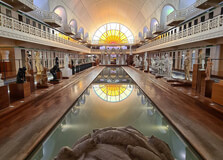
La Piscine Museum of Art and Industry
The La Piscine Museum of Art and Industry in Lille is a unique and fascinating destination for art and history lovers alike. Located in the heart of the city, this museum is housed in a former swimming pool, giving it an extraordinary charm. The museum not only showcases an impressive collection of fine arts, but also highlights the history of industrial art and design. The transformation of the building from a public bathhouse into an art museum makes it a striking example of adaptive reuse of architectural space, combining old-world charm with contemporary art. How to Reach La Piscine Museum of Art and Industry, Lille The La Piscine Museum of Art and Industry is located at 23 Rue de l'Isly in Lille, making it centrally located and easily accessible from various parts of the city. To get to the museum, the best public transport options are as follows: Metro: The museum is accessible via the Château d'Eau Metro Station on Line 1, which is only a short walk away from the museum entrance. Bus: Several buses connect to the museum, with stops near the museum, including buses 10, 27, and 34. Tram: Tram Line 2 also connects to stops near the museum, making it another convenient option for visitors. By Car: If you are driving, the museum is located within the city center, and there are nearby parking facilities, although it’s best to use public transport due to the city’s dense traffic. For those arriving from the Lille Flandres train station, it is only a short 15-minute walk to the museum, or you can opt for a short tram or bus ride. Weather in Lille Lille has a temperate maritime climate, which means that it experiences mild temperatures year-round, with cool winters and mild summers. The best time to visit La Piscine Museum of Art and Industry is during the spring and summer months when the weather is pleasant and conducive to walking around the city. During these months, temperatures range from 15°C to 25°C (59°F to 77°F), making it comfortable to explore the museum and nearby attractions. In winter, temperatures can drop to around 0°C (32°F), with occasional rainfall and cloudy skies. Even in winter, Lille remains an attractive destination, and the indoor environment of the museum ensures that it is an ideal place to visit regardless of the weather outside. Opening Hours and Timings The museum is open every day except for Mondays and public holidays, which makes it easy to plan a visit. The usual opening hours are from 10:00 AM to 6:00 PM, allowing plenty of time to explore its vast collection. It’s recommended to arrive early in the day to avoid crowds, especially during the weekend or during school holidays. Admission to temporary exhibitions may require separate tickets, while the main collections are included with the general entry ticket. Be sure to check the museum’s website for any changes to hours or special opening events, as these can occasionally occur due to exhibitions or public holidays. Why La Piscine Museum of Art and Industry is Famous for Lille? The La Piscine Museum of Art and Industry is famous not only for its impressive collection of art and industrial heritage but also for the stunning building in which it resides. Originally built in the 1930s as a public swimming pool, the building was repurposed in the 2000s to create one of the most unique museums in Europe. The juxtaposition of art and industrial design within the former pool creates an atmosphere that enhances the visitor’s experience. The museum's collection spans a variety of art forms, including fine arts, decorative arts, textiles, and ceramics, making it a true celebration of creative expression in all its forms. The museum has become a cultural hub in Lille, attracting both art aficionados and those with an interest in the history of industry and design. It is famous for its innovative approach to showcasing art in a space with historical significance, which enhances the experience of the artworks on display. Entry and Visit Details about La Piscine Museum of Art and Industry Entry to the museum is available at a reasonable price, with discounts for students, children, and seniors. Admission typically includes access to the permanent collection as well as any temporary exhibitions being held at the time. Special guided tours are available for those looking to learn more about the history of the building and its impressive art collection. The museum has a cafe where visitors can relax, grab a coffee, or enjoy a light meal while soaking in the atmosphere of this remarkable place. There is also a museum shop that sells a range of art-related products, including prints, books, and souvenirs. History and Architecture of La Piscine Museum of Art and Industry The La Piscine Museum of Art and Industry is located in a striking building originally designed as a public swimming pool. Completed in 1932, the Piscine of Lille was one of the largest public baths in the region. It became a symbol of the city’s modernity and urban development during the early 20th century. The building was designed in an Art Deco style, which was characteristic of the time, and featured intricate details such as mosaic tiles, grand arches, and an iconic swimming pool with a glass roof that allowed natural light to flood the space. In 2001, the building was repurposed as a museum, preserving much of the original architectural beauty while making the space suitable for housing art exhibitions. The swimming pool itself was transformed into a spectacular central hall, and the design successfully integrated the museum’s art collections while retaining the building’s historical charm. The combination of contemporary art with the building’s art-deco features creates a unique and visually stunning environment for visitors. Things to Do at La Piscine Museum of Art and Industry There are plenty of things to do at La Piscine Museum of Art and Industry: Explore the Permanent Collection: The museum houses an impressive collection of over 4,000 works, including paintings, sculptures, ceramics, and textiles from the 19th and 20th centuries. Enjoy Temporary Exhibitions: La Piscine frequently hosts temporary exhibitions showcasing contemporary artists or themes related to the industrial history of Lille. Guided Tours: Take part in a guided tour to learn more about the museum’s fascinating history and collections. Knowledgeable guides provide insights into the art and architecture of the museum. Relax in the Museum Café: The museum has a lovely café where visitors can enjoy refreshments while overlooking the museum’s beautiful courtyard and architectural features. Facts about La Piscine Museum of Art and Industry The museum was opened in 2001 after the building was transformed from a public swimming pool into a museum. La Piscine is known for its stunning Art Deco architecture, which has been preserved throughout the museum’s renovation. The museum’s collection spans a wide range of artistic movements, including works by famous French artists and decorative pieces from the industrial era. The museum also hosts various educational programs, workshops, and special events for visitors of all ages. Tips for Visiting La Piscine Museum of Art and Industry Arrive Early: To avoid crowds, it is advisable to visit early in the day or on weekdays. Wear Comfortable Shoes: The museum is large, and you’ll be doing a lot of walking. Comfortable footwear will make your visit more enjoyable. Check for Special Events: Be sure to check the museum’s website for any special exhibitions or events that may be taking place during your visit. Spend Time in the Café: The museum café offers a relaxing atmosphere with a nice selection of snacks and drinks. It’s a great place to unwind after exploring the exhibits.
Explore More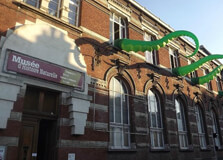
The Natural History Museum of Lille is one of the most captivating places to visit in the city, offering a fascinating insight into the world of nature and the evolution of life on Earth. Located in the heart of Lille, this museum is an important cultural and educational institution that attracts visitors of all ages. Whether you're a student of science, an animal lover, or simply looking for an enriching experience, the Natural History Museum provides an exciting exploration of natural history, biodiversity, and ecological science. How to Reach Natural History Museum, Lille The Natural History Museum is situated at 19 Rue de Bruxelles, 59000 Lille, making it easily accessible by various means of public transportation. Here are some of the best ways to get there: Metro: The closest metro station to the museum is République Beaux-Arts on Line 1. From here, it is only a 10-minute walk to the museum. Bus: Several bus routes pass near the museum, including routes 10, 34, and 12, which stop at or near the République Beaux-Arts station. Tram: The Lille Flandres tram stop is approximately a 15-minute walk from the museum and is well connected to various tram lines. By Car: If you're driving, the museum is located within Lille’s city center. Parking is available nearby, though it is recommended to use public transport due to limited parking spaces in the area. If you're coming from the Lille Flandres Train Station, it’s a short 10-minute tram ride or a 20-minute walk to the museum. Weather in Lille Lille experiences a temperate maritime climate, with relatively mild temperatures throughout the year. Winters are cool, with temperatures typically ranging between 1°C and 5°C (34°F and 41°F), while summers are mild with temperatures averaging between 16°C and 22°C (61°F to 72°F). Rainfall is common throughout the year, so it’s a good idea to bring an umbrella or raincoat, especially in the fall and winter months. The best time to visit the Natural History Museum is in spring and summer when the weather is pleasant and you can explore the museum’s surroundings and nearby parks as well. However, the museum is a great indoor destination regardless of the season, offering a perfect refuge from rainy or colder weather. Opening Hours and Timings The Natural History Museum of Lille is open to visitors every day except for Mondays and certain public holidays. The usual hours of operation are from 10:00 AM to 6:00 PM, with last entries typically allowed an hour before closing. The museum often hosts special events, exhibitions, and educational programs, so it is a good idea to check their website in advance for any changes to timings or closures. Admission is available throughout the day, but it is recommended to visit in the morning or early afternoon to avoid the larger crowds, especially on weekends or during school holidays. Why the Natural History Museum is Famous for Lille? The Natural History Museum of Lille is renowned for its diverse collection, which spans a variety of fields such as paleontology, zoology, botany, and geology. The museum’s displays showcase a wealth of specimens, including fossils, taxidermied animals, minerals, and plants, many of which are of great scientific and historical significance. What makes this museum particularly famous is its combination of educational and entertaining exhibits. It offers a hands-on experience, where visitors can explore interactive displays and learn about the natural world in a fun, engaging way. The museum is also home to a series of temporary exhibitions that delve into contemporary environmental issues, conservation, and biodiversity, making it a place where science, education, and awareness about nature come together. Entry and Visit Details about Natural History Museum, Lille Entry to the Natural History Museum of Lille is generally affordable, with discounts available for children, students, and seniors. Admission fees vary depending on whether you wish to visit only the permanent collection or include any special exhibitions. The museum offers free admission on the first Sunday of every month, making it a popular day for locals and tourists alike. Once inside, visitors will find a spacious and well-organized museum with various rooms dedicated to different aspects of natural history. The museum is family-friendly, with exhibits designed to engage children and adults alike. Educational programs, workshops, and special events are frequently held at the museum, giving visitors additional opportunities to learn about the natural world in a more interactive manner. History and Architecture of the Natural History Museum The Natural History Museum of Lille was founded in 1822, making it one of the oldest museums in the region. It has undergone various renovations and expansions over the years to accommodate the growing collection and modernize the space for better public engagement. The museum is housed in a historical building, which itself adds to the charm and character of the site. Its architecture is a blend of classical and modern elements, with intricate design features and large windows that allow natural light to flood the exhibition spaces. As you walk through the museum, you’ll see beautiful historic rooms that have been preserved while the exhibits have been updated with interactive technology. The building's original architectural features are complemented by new spaces designed for educational activities and temporary exhibitions. Things to Do at the Natural History Museum, Lille There are numerous exciting activities and things to do when visiting the Natural History Museum of Lille: Explore Permanent Exhibitions: Discover various collections of animals, fossils, minerals, and plants in the permanent exhibitions. The museum also features themed areas where you can learn about the Earth’s evolution, biodiversity, and the history of life on our planet. Attend Temporary Exhibitions: The museum regularly hosts temporary exhibitions that focus on current environmental issues, scientific discoveries, and global conservation efforts. These exhibitions are often interactive and provide visitors with a deeper understanding of the natural world. Participate in Educational Workshops: The museum offers a range of educational activities, including workshops and lectures, which are perfect for children, students, and adults who are eager to learn more about the environment and natural sciences. Take a Guided Tour: Enhance your visit with a guided tour to gain expert insights into the museum's exhibits. Knowledgeable guides will provide fascinating information about the displays, bringing the exhibits to life. Visit the Museum’s Garden: After touring the exhibits, relax in the museum’s lovely garden, which features various plants and offers a peaceful space for reflection. Facts about the Natural History Museum, Lille The museum has over 100,000 specimens on display, making it one of the largest natural history collections in France. It houses significant collections of fossils, including dinosaur bones and ancient plants, offering a glimpse into the past. The museum is also home to an impressive collection of taxidermy animals from various ecosystems around the world, providing a detailed look at wildlife diversity. It offers educational programs for children, including interactive exhibits and school visits, making it a popular destination for family outings. The museum frequently hosts temporary exhibitions on topics such as biodiversity, the impact of climate change, and sustainable living. Tips for Visiting the Natural History Museum, Lille Visit During Weekdays: To avoid crowds, try to visit on a weekday, especially if you're visiting with children or seeking a quiet experience. Check for Special Events: The museum frequently hosts special events and educational programs. Be sure to check the website for information on any upcoming workshops, lectures, or exhibitions. Bring Your Camera: With so many interesting displays, you’ll want to take plenty of photos. However, always be mindful of museum policies regarding photography. Wear Comfortable Shoes: Expect to walk through large exhibits, so comfortable footwear is essential for an enjoyable visit.
Explore More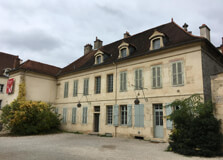
The **Museum of Burgundy Life** (Musée de la Vie Bourguignonne) is one of the most significant cultural landmarks in **Dijon**, located in the heart of the **Burgundy** region of France. This museum offers a fascinating glimpse into the daily life, traditions, and culture of the people of Burgundy through the centuries. Visitors can explore the museum's rich collection of artifacts that tell the story of **Burgundy's history**, customs, and lifestyle. History of the Museum of Burgundy Life The **Museum of Burgundy Life** was founded in the late **19th century**, with the aim of preserving and showcasing the region’s cultural heritage. The museum is housed in a beautiful **17th-century building**, which was originally the **former Hôtel de Besançon**, a grand mansion that was converted into a museum. The museum's collection grew over the years as donations of everyday objects, clothing, and tools from Burgundy's rural and urban life were made by local families. The museum’s collections span several centuries, focusing on the life and traditions of Burgundy from the **Middle Ages** to the early **20th century**. It covers everything from traditional Burgundy costumes to tools used in agriculture, wine-making, and local crafts. The museum's exhibits also highlight the region’s rich **gastronomy**, **arts**, and **craftsmanship**, making it a must-visit for anyone interested in the cultural diversity and history of **Burgundy**. Architecture of the Museum of Burgundy Life The museum is located in the **Hôtel de Besançon**, a **17th-century building** that is a fine example of French classical architecture. The building itself is an architectural masterpiece with **stone façades**, **elegant arches**, and beautifully preserved interiors. The museum's exhibition rooms retain much of the building's original charm, with high ceilings, large windows, and elegant wooden floors. The museum’s design highlights the historical significance of the building while providing the perfect space to showcase the extensive collection of Burgundy artifacts. The rooms are well-lit, spacious, and offer visitors a comfortable environment in which to explore the various exhibits. The blend of **historical architecture** with carefully curated displays makes for an enriching and immersive experience. Why is the Museum of Burgundy Life Famous? The **Museum of Burgundy Life** is famous for its detailed and comprehensive presentation of the **traditional life** of the people of Burgundy. Unlike other museums that focus solely on art or history, this museum emphasizes the **daily experiences** and **customs** of Burgundy’s inhabitants. It is an essential resource for those looking to understand the region's **heritage**, including its **rural traditions**, **crafts**, and **gastronomy**. The museum is also known for its impressive collection of **ethnographic objects**, such as **traditional costumes**, **farm tools**, and **household items**, all of which offer a fascinating look at the life of Burgundy's past generations. Many of these objects were donated by local families and are integral to understanding how Burgundy's culture has evolved over time. How to Reach the Museum of Burgundy Life Getting to the **Museum of Burgundy Life** is simple, as it is located in the heart of **Dijon**, near several other popular tourist attractions. Here are some of the best ways to reach the museum: By Public Transport: Dijon has an excellent public transportation system, including **trams** and **buses**. The museum is easily accessible by tram, with the **Darcy** tram stop just a short walk from the entrance. There are also several bus lines that stop nearby, making it easy to reach the museum from anywhere in the city. By Foot: If you're staying in the city center, the museum is easily accessible by foot. It is located near **Place Darcy**, a central square in Dijon, so you can walk to the museum from most central hotels and accommodations. By Car: If you're driving, you can park in nearby public parking areas. However, the streets around the museum can be narrow, and parking can be limited, so it’s best to park in one of the larger parking structures near the city center. Weather in Dijon Dijon has a **temperate climate**, with distinct seasons. The best time to visit the **Museum of Burgundy Life** is during the **spring and summer months**, from **April to October**, when the weather is mild and pleasant, with average temperatures ranging from **15°C to 25°C** (59°F to 77°F). This is an excellent time to explore the city and enjoy its outdoor cafes and attractions. In **winter**, the temperature drops, with average highs of around **5°C to 10°C** (41°F to 50°F). Although the weather can be chilly, the museum remains open year-round, and visiting during the off-season means fewer crowds and a more peaceful experience. Timing and Entry Details The **Museum of Burgundy Life** is open throughout the week, with certain areas and exhibitions available during specific hours. Here are the typical opening hours: Opening Hours: 10:00 AM to 6:00 PM (Tuesday to Sunday) Closed on Mondays. Entry Fee: The entrance fee to the museum is typically around €5 for adults, with discounted tickets available for students, children, and seniors. Entrance is free for children under 12. Things to Do at the Museum of Burgundy Life Visitors to the **Museum of Burgundy Life** can enjoy a wide range of activities and experiences: Explore the Exhibits: The museum has a vast collection of artifacts that highlight the **history** and **daily life** of the people of Burgundy. These include everything from **traditional costumes** to **agricultural tools**, as well as items used in local **crafts** and **gastronomy**. Learn About Local Traditions: The museum provides a deep dive into the **local customs** and **festivals** of Burgundy, showing visitors how the people of this region lived, worked, and celebrated over the centuries. Discover Burgundy’s Gastronomy: One of the museum’s highlights is its focus on **Burgundy’s culinary traditions**, including its famous wine-making practices. Visitors can learn about the region’s **vineyards**, **cheese-making**, and **culinary culture**. Take a Guided Tour: If you want to enhance your visit, consider taking a **guided tour** of the museum. Knowledgeable guides will provide additional context and insight into the exhibits, helping you gain a deeper understanding of Burgundy’s cultural heritage. Facts and Tips about the Museum of Burgundy Life Did you know? The museum's collection spans several centuries, with some exhibits dating back to the **Middle Ages**. It offers a rich look at Burgundy’s diverse heritage and traditions. Tip: Be sure to visit the section on **Burgundy's wine culture**, as the region is world-famous for its vineyards and wines. The museum provides a detailed look at the traditional methods of wine-making in Burgundy. Tip: If you're visiting during the summer months, consider checking out any temporary exhibitions or **cultural events** that might be happening at the museum. Tip: Plan your visit on a weekday if you prefer to avoid larger crowds, as weekends can see more visitors, especially during peak tourist seasons.
Explore More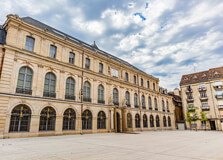
Archaeological Museum of Dijon
The **Archaeological Museum of Dijon** (Musée Archéologique de Dijon) is a must-visit destination for history lovers and anyone curious about the ancient past of this beautiful French city. Located in the heart of Dijon, the museum showcases the rich archaeological heritage of the region, with collections that span from prehistoric times to the medieval period. The museum's fascinating exhibits, housed in a historic building, offer a unique opportunity to explore the evolution of the region and its people over the centuries. History of the Archaeological Museum of Dijon The Archaeological Museum of Dijon was established in the 19th century, but its origins date back to the late 18th century when an interest in **local history and antiquities** started to grow in Dijon. The museum was originally part of the **Abbey of Saint-Bénigne**, an important religious site in the city, and its vast collection of archaeological artifacts was gathered from excavations in the region and other archaeological sites across **Burgundy**. The museum is housed in a beautiful **Renaissance-style** building that was once part of the **Saint-Bénigne Abbey**. Over the years, it has become one of the key cultural institutions in Dijon, offering a comprehensive look at the history of Burgundy through its impressive array of **ancient artifacts, sculptures, ceramics**, and **architectural pieces**. The museum provides invaluable insight into the ancient civilizations that once inhabited the area, from the **Gauls** to the **Romans**, and the **Medieval period**. Architecture of the Archaeological Museum of Dijon The **architecture** of the museum itself is a work of art. The museum is housed in the former **Saint-Bénigne Abbey**, which dates back to the 6th century, making the building itself a piece of history. The abbey was later transformed into a museum, retaining much of its original charm, with a stunning blend of **Gothic and Renaissance architecture**. Visitors can admire the **stone facades**, **vaulted ceilings**, and intricate **stone carvings** that decorate the museum's walls. The design of the building, with its **large windows**, **open courtyards**, and **wooden beams**, provides a perfect backdrop for the archaeological collections. Inside, the museum has been carefully curated to display the artifacts in a way that complements the architecture, allowing visitors to immerse themselves in the rich history of Dijon while appreciating the beauty of the building itself. Why is the Archaeological Museum of Dijon Famous? The Archaeological Museum of Dijon is famous for its extensive collection of **ancient artifacts** and its role in preserving the history of **Burgundy**. It is one of the oldest museums in France and holds an incredibly valuable collection that includes **Roman pottery**, **Greek sculptures**, **medieval tombstones**, and **medieval religious artifacts**. These objects help visitors understand the region's history, from its **early settlements** to its transformation into an important center of Roman culture. Aside from its impressive collection, the museum is also recognized for its role in **archaeological research** and its educational contributions. It regularly hosts special exhibitions and provides a platform for showcasing the ongoing discoveries made in the region. For anyone interested in the rich history of **Burgundy** and the ancient civilizations that once inhabited it, the Archaeological Museum of Dijon is an essential stop. How to Reach the Archaeological Museum of Dijon The Archaeological Museum of Dijon is located in the city center, making it easily accessible for both locals and tourists. Whether you're traveling by public transport, walking, or driving, reaching the museum is convenient. By Public Transport: Dijon has an efficient public transportation system, including buses and trams. The museum is located within walking distance from the **Dijon City Hall** and **Place de la Liberation**. You can take tram line **T1** or **T2**, and get off at **Darcy** or **Jaures**, both of which are close to the museum. By Foot: If you are staying in central Dijon, the Archaeological Museum is only a short walk from many of the city's key attractions. Strolling through the city's charming streets will also allow you to enjoy the beautiful **Renaissance architecture** of the area. By Car: If you're driving, there are several public parking areas around the city center. However, Dijon is a **pedestrian-friendly city**, and it may be easier to park in one of the nearby lots and walk to the museum. Weather in Dijon Dijon experiences a temperate climate, with **mild winters** and **warm summers**. The best time to visit the Archaeological Museum of Dijon is during the **spring** and **summer** months, from **April to September**, when the weather is pleasant and temperatures range from **15°C to 25°C** (59°F to 77°F). During this time, the museum is typically more crowded, so it is advisable to plan your visit early in the day to avoid the crowds. If you are visiting in **winter**, temperatures can drop to **2°C to 8°C** (36°F to 46°F). While it may be a bit chilly, the winter months offer a quieter and more peaceful experience at the museum, allowing you to enjoy the exhibits without the usual crowds. Timing and Entry Details The Archaeological Museum of Dijon is typically open from **Tuesday to Sunday**, with opening hours from **10:00 AM to 6:00 PM**. It is closed on Mondays, and public holidays may affect its schedule, so it’s a good idea to check the official website or call ahead to confirm opening hours before your visit. Entry to the museum is generally **free** for **EU residents** under the age of 26, while a small fee is charged for adults and non-EU visitors. Special exhibitions may have an additional charge. The museum also offers **guided tours** and educational workshops, which can be reserved in advance. Things to Do at the Archaeological Museum of Dijon Visitors to the Archaeological Museum of Dijon will find plenty to see and do. Here are some of the top activities: Explore the Exhibits: The museum's collection spans thousands of years, from prehistoric tools to Roman sculptures, medieval religious artifacts, and **Gallo-Roman** relics. Take your time to explore the diverse collections and learn about the region’s ancient past. Visit Special Exhibitions: The museum regularly hosts special exhibitions that delve deeper into specific aspects of **Burgundy’s history** and archaeology. These exhibitions offer a unique perspective on the region's cultural evolution. Take a Guided Tour: For a more enriching experience, join one of the museum's **guided tours**, where expert guides will take you through the history of the museum’s artifacts and their significance. Relax in the Courtyard: The museum is located in the former **Saint-Bénigne Abbey**, which includes a peaceful courtyard. After exploring the exhibits, take a break and enjoy the serenity of the historic grounds. Facts and Tips about the Archaeological Museum of Dijon Did You Know? The museum houses some of the finest examples of **Roman mosaics** and **medieval tombs** from Burgundy, which are a must-see for history enthusiasts. Tip: Plan to spend at least 1-2 hours exploring the museum, especially if you want to fully appreciate the collections and their historical context. Tip: Check out the museum's gift shop, which sells books, replicas, and souvenirs related to the museum's exhibits. Tip: If you're visiting with children, look out for any **interactive displays** or educational programs that are designed to make learning about history fun.
Explore More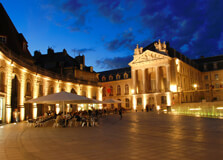
The **Museum of Fine Arts of Dijon** (Musée des Beaux-Arts de Dijon) is one of the most prominent cultural landmarks in the city of Dijon, located in the heart of the Burgundy region in France. The museum is a testament to the city’s rich artistic history and showcases an extensive collection of artwork, from **European paintings** to **decorative arts**. With its impressive galleries and carefully curated exhibits, it offers a glimpse into the artistic evolution of France and Europe over the centuries. History of the Museum of Fine Arts, Dijon The Museum of Fine Arts in Dijon was founded in the early 19th century, and its origins can be traced back to the **Duchy of Burgundy**. The museum’s collection initially began with a small group of artworks and artifacts that were brought together from various **monasteries**, **churches**, and **palaces** in the region. Over the years, the museum grew into one of the most significant institutions for fine art in France, housing works from various periods, including the **Middle Ages**, **Renaissance**, **Baroque**, and **Modern** eras. Today, the museum is located in the **Palace of the Dukes of Burgundy**, a historical building that was originally the seat of the powerful Dukes of Burgundy. The structure, which dates back to the 14th century, houses a rich collection of art, including **paintings**, **sculptures**, **ceramics**, and **decorative arts**. The museum is known not only for its historical significance but also for its impressive curation and educational role in the cultural landscape of Dijon and beyond. Architecture of the Museum of Fine Arts, Dijon The architecture of the Museum of Fine Arts is an attraction in itself. The museum is housed in the **Palace of the Dukes of Burgundy**, a remarkable building with **Gothic** and **Renaissance** elements. The palace was originally built to serve as the residence of the Dukes of Burgundy in the 14th century and has undergone several renovations over the centuries, which have added layers of historical significance to the building. The **grand facades**, **ornate courtyards**, and **intricate stone carvings** reflect the grandeur of the past. Inside the museum, visitors can explore beautiful **vaulted ceilings**, **wooden paneling**, and **stone galleries** that house some of the most cherished works of art in France. The building’s design is a blend of **classical and medieval** architectural styles, making it a perfect backdrop for the museum’s vast collection. Visitors can enjoy the **expansive galleries** that feature works spanning several centuries, as well as the **historical architecture** that adds to the immersive experience of the museum. Why is the Museum of Fine Arts Famous? The Museum of Fine Arts in Dijon is famous for its **extensive and diverse collection** of **European paintings**, sculptures, and decorative arts. Its collection includes works from renowned artists such as **Gustave Courbet**, **Jean-Baptiste Greuze**, and **Eugène Delacroix**, among others. The museum’s holdings also include **medieval art**, **Renaissance sculptures**, and **Baroque paintings**, making it a vital resource for understanding the artistic evolution of France and Europe. One of the most notable aspects of the museum is its impressive collection of **Italian Renaissance paintings** and **Dutch Baroque** works, which are some of the finest in France. It also boasts a **majestic collection of 18th-century French art**, including **rococo-style** paintings and decorative objects. Visitors can explore a wide range of artistic styles and movements, from the **early Renaissance** to **Impressionism**, giving them a well-rounded perspective on European art history. How to Reach the Museum of Fine Arts, Dijon The Museum of Fine Arts is conveniently located in the heart of Dijon, making it easily accessible for tourists and locals alike. Whether you're traveling by car, public transportation, or walking, you’ll find it simple to reach the museum. By Public Transport: Dijon has an efficient public transportation network, including buses and trams. The museum is located near the **Place de la Liberation**, and the closest tram stop is **Place Darcy**. From there, it’s only a short walk to the museum. By Foot: If you are staying in central Dijon, you can easily walk to the museum. It is located in a pedestrian-friendly area, and walking allows you to explore the charming streets of Dijon along the way. By Car: If you're driving, there are several parking lots around the city center. Parking near the museum is available, but it’s recommended to use public transportation or walk to avoid the hassle of finding parking in the busy downtown area. Weather in Dijon Dijon has a **temperate climate**, with four distinct seasons. The **best time to visit** the Museum of Fine Arts is during the **spring (April to June)** and **summer (July to September)** when the weather is mild and pleasant. Average temperatures range from **15°C to 25°C (59°F to 77°F)**, making it ideal for walking and sightseeing. If you prefer quieter periods to visit the museum, consider coming during **autumn (October to November)** or **winter (December to February)**. The weather during these seasons is cooler, with temperatures ranging from **2°C to 10°C (36°F to 50°F)**. While the museum is quieter in winter, it’s a great time for indoor activities, and the museum’s galleries are less crowded. Timing and Entry Details The Museum of Fine Arts in Dijon is generally open from **Tuesday to Sunday**, with opening hours from **10:00 AM to 6:00 PM**. It is closed on Mondays, and the schedule may vary during public holidays, so it is always a good idea to check the official website or call ahead before planning your visit. Entry to the museum is typically **free** for EU residents under the age of 26, while adults and non-EU visitors are charged a small entry fee. Special exhibitions may require an additional ticket. The museum also offers **guided tours** for visitors who wish to learn more about the artwork and the museum’s history. Things to Do at the Museum of Fine Arts, Dijon The Museum of Fine Arts offers a variety of activities for visitors. Here are some highlights: Explore the Permanent Collection: The museum’s collection spans several centuries of European art. Spend time admiring the masterpieces of **Impressionism**, **Renaissance**, **Baroque**, and **Modern art**. Attend Special Exhibitions: The museum regularly hosts rotating exhibitions that explore specific themes, artists, or movements. These exhibitions offer a deeper look into various artistic periods and are a great way to enhance your visit. Take a Guided Tour: For a more in-depth experience, consider booking a guided tour. The museum's knowledgeable guides will take you through the galleries and explain the history and significance of the pieces on display. Relax in the Museum Café: After exploring the exhibits, you can relax in the museum's café, where you can enjoy a coffee or a light snack while reflecting on the artworks you’ve seen. Facts and Tips about the Museum of Fine Arts, Dijon Did You Know? The museum is housed in the historic **Palace of the Dukes of Burgundy**, which is also home to **Dijon’s City Hall**. The stunning architecture is a historical landmark in itself. Tip: Spend some time admiring the **Italian Renaissance** and **Dutch Baroque** works. These are among the finest in France and offer a unique perspective on European art history. Tip: Check the museum’s website for **upcoming exhibitions** and special events. You may want to plan your visit around these to get the most out of your experience. Tip: Don’t forget to stop by the museum’s gift shop, which offers a selection of art-related books, souvenirs, and high-quality reproductions of famous artworks.
Explore More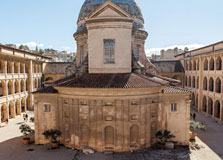
The Old Charity Center (La Vieille Charité) in Marseille is a historic architectural masterpiece and cultural hub. Originally built as a shelter for the poor in the 17th century, it now houses museums, art exhibitions, and cultural institutions. How to Reach Old Charity Center, Marseille You can reach the Old Charity Center through various transportation options: By Metro: Take Line 2 to "Jules Guesde" station, which is a short walk away. By Bus: Buses 49 and 55 stop near the site. By Car: Limited parking is available, so public transport is recommended. By Foot: Located in the Panier district, it is accessible by a scenic walk through Old Marseille. Weather in Marseille Marseille has a Mediterranean climate, making it ideal for visiting year-round: Spring (March-May): Mild temperatures ranging from 15-22°C (59-72°F). Summer (June-August): Hot and sunny, with highs up to 35°C (95°F). Autumn (September-November): Pleasant weather with occasional rain. Winter (December-February): Cool but rarely freezing, with temperatures around 5-12°C (41-54°F). Timing and Entry Details The Old Charity Center is open to visitors throughout the year with the following schedule: Tuesday to Sunday: 10:00 AM - 6:00 PM Closed on Mondays Entry Fee: Free entry to the courtyard; museum exhibitions have separate charges. Why is Old Charity Center Famous? The Old Charity Center is renowned for its stunning Baroque architecture and cultural significance. It serves as a major artistic and historical venue, featuring museums like the Museum of Mediterranean Archaeology and contemporary art exhibitions. History and Architecture Constructed between 1671 and 1749 by architect Pierre Puget, the Old Charity Center was originally designed as a hospice for the poor. The building is an excellent example of Baroque architecture, featuring an elegant courtyard and a central chapel with a striking dome. Things to Do at Old Charity Center Visit the Museums: Explore exhibitions of Mediterranean archaeology and contemporary art. Admire the Architecture: Walk through the historic courtyard and admire the intricate design. Attend Cultural Events: The center regularly hosts film screenings, workshops, and performances. Photography: The unique design makes it a fantastic spot for photography. Relax in Cafés: Enjoy a peaceful break at nearby cafés within the historic setting. Interesting Facts about Old Charity Center Originally built to house the poor, it has now become a leading cultural site. The central chapel is considered one of Marseille’s architectural masterpieces. It was used as barracks during the French Revolution. Tips for Visiting Visit early in the day to enjoy a peaceful atmosphere. Check museum schedules in advance for special exhibitions. Wear comfortable shoes as the Panier district has cobbled streets. Combine your visit with nearby attractions like the Marseille Cathedral.
Explore More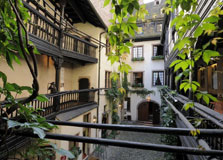
The Alsatian Museum in Strasbourg is a fascinating cultural institution dedicated to showcasing the traditions, customs, and daily life of the Alsace region. It houses an impressive collection of artifacts, furniture, costumes, and tools that offer a glimpse into Alsatian heritage. How to Reach Alsatian Museum, Strasbourg You can reach the museum through various modes of transportation: By Tram: Take tram lines A or D and get off at the "Porte de l'Hôpital" stop. By Bus: Several bus routes stop near the museum, making it easily accessible. By Car: Parking spaces are available nearby, but the city center can be busy. By Foot: Located in the historic center of Strasbourg, the museum is easily reachable on foot. Weather in Strasbourg Strasbourg experiences a temperate oceanic climate with four distinct seasons: Spring (March-May): Mild and pleasant with blooming flowers. Summer (June-August): Warm and ideal for exploring. Autumn (September-November): Cool with colorful foliage. Winter (December-February): Cold, sometimes snowy, perfect for visiting Christmas markets. Timing and Entry Details The museum operates with the following schedule: Opening Hours: 10:00 AM - 6:00 PM (Closed on Mondays) Entry Fee: A standard fee applies, with discounts for students and groups. Why is Alsatian Museum Famous? The museum is known for preserving and promoting the unique traditions of Alsace. Visitors can explore traditional Alsatian homes, handicrafts, and folk art, making it a cultural treasure in Strasbourg. History and Architecture Established in 1907, the museum is housed in a series of historic buildings that reflect traditional Alsatian architecture. The timber-framed structures create an authentic setting for the exhibitions. Things to Do at Alsatian Museum Explore Authentic Interiors: Experience recreated Alsatian homes from different eras. View Traditional Costumes: See regional attire worn in festivals and daily life. Learn About Alsatian Crafts: Discover pottery, weaving, and other handicrafts. Join Guided Tours: Gain insights into Alsace's rich history with expert guides. Interesting Facts about Alsatian Museum The museum showcases over 5,000 artifacts from rural Alsace. It is located in three connected 17th-century houses. It offers interactive exhibits and storytelling sessions for children. Tips for Visiting Visit during weekdays to avoid crowds. Take an audio guide for a detailed experience. Check for temporary exhibitions and special events. Wear comfortable shoes as there are multiple floors to explore.
Explore More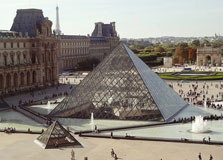
The Louvre Museum is one of the world's largest and most visited art museums, located in the heart of Paris, France. It is home to thousands of artworks, including the famous Mona Lisa and Venus de Milo. How to Reach The Louvre The Louvre is easily accessible by various means: By Air: The nearest airports are Charles de Gaulle (CDG) and Orly (ORY). By Metro: The closest station is Palais Royal – Musée du Louvre (Lines 1 and 7). By Bus: Buses 21, 24, 27, 39, 48, 68, 69, and 95 stop near the museum. By Foot: Located centrally, it's an easy walk from other Paris landmarks. Weather in Paris Paris has an oceanic climate: Spring (March-May): Pleasant temperatures and blooming gardens. Summer (June-August): Warm and lively, perfect for exploration. Autumn (September-November): Cooler weather with beautiful fall colors. Winter (December-February): Chilly but charming with Christmas lights. Timing and Entry Details Opening Hours: Typically open from 9:00 AM to 6:00 PM, closed on Tuesdays. Entry Fee: General admission is around €17, with free entry for visitors under 18 and on the first Saturday of each month after 6 PM. Why is The Louvre Famous? The Louvre is renowned for: Being the largest art museum in the world. Housing the Mona Lisa, Venus de Milo, and The Winged Victory of Samothrace. Its stunning glass pyramid entrance. History and Architecture The Louvre was originally a medieval fortress built in the 12th century and later transformed into a royal palace. In 1793, it was officially opened as a public museum. The modern glass pyramid entrance was added in 1989, designed by architect I. M. Pei. Things to Do at The Louvre Explore world-famous exhibits including Renaissance masterpieces and ancient artifacts. Take a guided tour for a deeper understanding of the artworks. Visit the museum at night for a unique experience. Relax in the nearby Tuileries Garden after your visit. Interesting Facts about The Louvre The Louvre has over 35,000 artworks on display. The Mona Lisa is protected by bulletproof glass. The museum receives over 9 million visitors annually. Tips for Visiting Buy tickets online to skip the long queues. Visit early in the morning or late in the evening to avoid crowds. Wear comfortable shoes as the museum is vast.
Explore More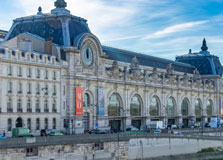
The Orsay Museum (Musée d'Orsay) is one of the most renowned museums in the world, famous for its vast collection of Impressionist and Post-Impressionist art. Housed in a former railway station, the museum offers an incredible journey through 19th and early 20th-century art. How to Reach Orsay Museum, Paris The Orsay Museum is conveniently located in the heart of Paris and is accessible by various modes of transport: By Metro: The nearest station is Solférino (Line 12). By RER: Take RER C to the Musée d'Orsay station. By Bus: Buses 24, 63, 68, 69, 73, 83, 84, and 94 stop near the museum. By Foot: It is a short walk from the Louvre and the Seine River. Weather in Paris Paris experiences a temperate oceanic climate: Spring (March-May): Mild and pleasant. Summer (June-August): Warm with occasional rain. Autumn (September-November): Cool with falling leaves. Winter (December-February): Chilly with possible snowfall. Timing and Entry Details Opening Hours: The museum is open from 9:30 AM to 6:00 PM daily, except Mondays. On Thursdays, it remains open until 9:45 PM. Entry Fee: General admission is around €16, with discounts available for students and free entry on the first Sunday of each month. Why is Orsay Museum Famous? The Orsay Museum is renowned for: Its impressive collection of Impressionist and Post-Impressionist art by Monet, Van Gogh, Renoir, and Degas. Its unique architecture as a former railway station turned into a museum. The vast selection of sculptures, photography, and decorative arts. History and Architecture The museum is housed in the former Gare d'Orsay, a railway station built in 1900. Designed by Victor Laloux, the building itself is a masterpiece of Beaux-Arts architecture. In 1986, it was transformed into the Orsay Museum to showcase 19th and early 20th-century art. Things to Do at Orsay Museum Admire Impressionist paintings by artists like Monet, Manet, and Renoir. Explore Van Gogh’s works, including Starry Night Over the Rhône. Visit the grand clock window for stunning views of Paris. Discover sculptures by Rodin and other artists. Enjoy the museum café with a beautiful ambiance. Interesting Facts about Orsay Museum The building was originally a railway station for the 1900 Exposition Universelle. The museum opened in 1986 and now attracts over 3 million visitors annually. It houses the world’s largest collection of Impressionist art. Tips for Visiting Buy tickets online to avoid long queues. Visit early or on a Thursday evening to beat the crowds. Use an audio guide to enhance your experience. Take time to enjoy the scenic clock tower views.
Explore MoreGrand Trio Paris - Brussels - Amsterdam - Private - 6 Nights - 7 Days
7 Days/ 6 Night
Paris - Amsterdam - Brussels
Grand European Trio Paris - Brussels - Amsterdam 6 Nights - 7 Days
7 Days/ 6 Night
Paris - Brussels - Amsterdam
Classical Spain With Paris 9 Nights - 10 Days Tour
10 Days/ 9 Night
Barcelona - Paris - Madrid - Seville - Granada
France And Swiss Alps 10 Nights - 11 Days Tour
11 Days/ 10 Night
Paris - Lyon - Zurich - Lucerne
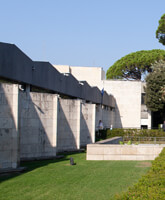
The Marc Chagall National Museum
The Marc Chagall National Museum, Nice The Marc Chagall National Museum in Nice is one of the most significant art museums dedicated to the works of the famous Russian-French artist Marc Chagall. The museum primarily showcases his biblical-themed artworks, making it a must-visit destination for art lovers and history enthusiasts. How to Reach The Marc Chagall National Museum, Nice You can reach the museum through various means of transport: By Bus: Several buses, including lines 5, 33, and 70, stop near the museum. By Tram: Take Line 1 and get off at the "Gorbella" or "Vernier" stops. By Car: Limited parking is available nearby. By Foot: It’s a short walk from Nice city center, making it accessible for pedestrians. Weather in Nice Nice enjoys a Mediterranean climate with pleasant temperatures throughout the year: Spring (March-May): Mild and comfortable, perfect for sightseeing. Summer (June-August): Warm with temperatures reaching 30°C (86°F). Autumn (September-November): Pleasant weather with fewer crowds. Winter (December-February): Cool but rarely freezing, ideal for a peaceful visit. Timing and Entry Details The museum is open daily except on Tuesdays, January 1st, May 1st, and December 25th. Opening Hours: 10:00 AM - 6:00 PM Entry Fee: Standard entry fee applies, with discounts available for students and groups. Why is The Marc Chagall National Museum Famous? The museum is renowned for its collection of Chagall’s masterpieces, particularly his biblical paintings. It houses the largest public collection of Chagall’s works, including paintings, stained glass, mosaics, and tapestries. History and Architecture Inaugurated in 1973, the museum was designed by architect André Hermant in close collaboration with Chagall himself. The minimalist architectural style allows visitors to focus on the vibrant colors and expressive themes of Chagall’s work. Things to Do at The Marc Chagall National Museum Explore the Biblical Message Series: A collection of 17 paintings inspired by the Old Testament. Admire the Stained Glass Windows: Beautifully designed by Chagall, illuminating the museum. Attend Art Workshops: The museum regularly hosts art sessions and cultural events. Relax in the Garden: The serene garden surrounding the museum provides a peaceful retreat. Interesting Facts about The Marc Chagall National Museum Marc Chagall personally oversaw the curation of his works in the museum. The museum includes rare sketches and preliminary drawings by Chagall. It is one of the few museums in the world dedicated entirely to a single artist. Tips for Visiting Visit early to avoid crowds and fully immerse yourself in the artwork. Audio guides are available to enhance your experience. Photography is allowed but without flash. Check the museum’s website for temporary exhibitions and special events.
Explore More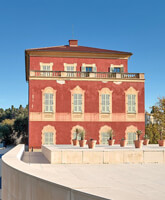
The Matisse Museum in Nice is dedicated to the works of the renowned French artist Henri Matisse. Located in the serene surroundings of Cimiez, the museum showcases a vast collection of Matisse’s paintings, sculptures, drawings, and personal artifacts, offering a deep insight into his artistic journey. How to Reach Matisse Museum, Nice You can reach the Matisse Museum through various transportation options: By Bus: Take bus lines 5, 18, or 33, which stop near the museum. By Car: Paid parking is available in the Cimiez area, though spaces can be limited. By Foot: The museum is a scenic 30-minute walk from Nice city center. By Tram: Take Tram Line 1 to the “Vauban” stop and walk to the museum. Weather in Nice Nice enjoys a Mediterranean climate, making it an excellent destination year-round: Spring (March-May): Mild temperatures and blooming gardens make for a pleasant visit. Summer (June-August): Warm and sunny, with temperatures around 30°C (86°F). Autumn (September-November): Comfortable weather with fewer tourists. Winter (December-February): Cool but rarely below 10°C (50°F), ideal for a quiet visit. Timing and Entry Details The Matisse Museum operates on the following schedule: Opening Hours: 10:00 AM - 6:00 PM (Closed on Tuesdays, January 1st, Easter Sunday, May 1st, and December 25th) Entry Fee: General admission applies, with free entry on the first Sunday of every month. Why is Matisse Museum Famous? The museum is renowned for housing one of the most extensive collections of Matisse’s works, spanning from his early drawings to later masterpieces. It provides insight into his creative process and personal life, making it a significant cultural site for art lovers. History and Architecture The museum is housed in a beautiful 17th-century Genoese villa, known as Villa des Arènes. Established in 1963, the museum was created to celebrate Matisse’s connection with Nice, where he lived for a significant part of his life. The vibrant red façade and lush gardens surrounding the building add to its charm. Things to Do at Matisse Museum Explore Matisse’s Artwork: View an impressive collection of paintings, sculptures, and sketches. Visit the Personal Collection: See personal items such as Matisse’s furniture, books, and tools. Stroll Through the Gardens: Enjoy the peaceful green space around the museum. Attend Special Exhibitions: The museum frequently hosts temporary exhibitions and events. Interesting Facts about Matisse Museum Henri Matisse spent the last years of his life in Nice and developed a strong artistic connection with the city. The museum includes rare paper cut-outs, a technique Matisse pioneered later in life. It is one of the largest collections of Matisse’s work in the world. Tips for Visiting Visit early in the day to avoid crowds. Take advantage of free entry on the first Sunday of each month. Photography is allowed, but flash is prohibited. Combine your visit with a trip to the nearby Cimiez Monastery and gardens.
Explore More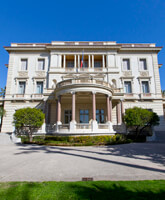
Villa Masséna Musée is a historical museum located on the famous Promenade des Anglais in Nice, France. The museum showcases the history of Nice from the Napoleonic era to the early 20th century, with a special focus on art, culture, and heritage. How to Reach Villa Masséna Musée, Nice You can reach the museum using various transport options: By Tram: Take Line 2 and get off at the "Jean Médecin" stop. By Bus: Several buses, including lines 12 and 32, stop near the museum. By Car: Parking is available nearby at underground parking lots. By Foot: Located near the city center, the museum is easily accessible by walking along the Promenade des Anglais. Weather in Nice Nice enjoys a Mediterranean climate, making it a great destination year-round: Spring (March-May): Pleasant weather with blooming gardens. Summer (June-August): Warm temperatures around 30°C (86°F), perfect for beach visits. Autumn (September-November): Mild and less crowded. Winter (December-February): Cool but comfortable, with temperatures rarely dropping below 10°C (50°F). Timing and Entry Details The museum is open throughout the year except on public holidays. Opening Hours: 10:00 AM - 6:00 PM Closed On: Tuesdays and certain holidays. Entry Fee: Standard admission fee applies, with discounts for students and seniors. Why is Villa Masséna Musée Famous? Villa Masséna Musée is famous for its stunning architecture and its rich collection of artifacts, paintings, and furniture that illustrate Nice’s history. The villa itself is a masterpiece of Belle Époque architecture, making it a cultural gem of the city. History and Architecture Built between 1898 and 1901 for Prince Victor d’Essling, the villa was later donated to the city of Nice in 1919. Designed by architect Hans-Georg Tersling, the villa features neoclassical influences and is surrounded by beautiful gardens. Things to Do at Villa Masséna Musée Explore Historical Exhibits: Learn about Nice’s past through paintings, documents, and artifacts. Admire Belle Époque Interiors: The luxurious rooms reflect the elegance of the era. Visit the Gardens: The landscaped gardens are perfect for a relaxing stroll. Attend Special Exhibitions: The museum hosts temporary exhibitions and cultural events. Interesting Facts about Villa Masséna Musée The villa was once a private residence before being converted into a museum. The gardens were designed by Édouard André, a renowned landscape architect. The museum holds personal belongings of Napoleon Bonaparte, adding to its historical significance. Tips for Visiting Visit early to avoid crowds and enjoy a peaceful experience. Photography is allowed but flash photography is restricted inside. Audio guides are available to enhance your visit. Check the museum’s website for any special exhibitions before planning your visit.
Explore More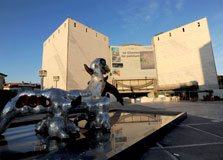
Modern & Contemporary Art Museum
The Modern & Contemporary Art Museum (Musée d'Art Moderne et d'Art Contemporain - MAMAC) in Nice is a must-visit destination for art enthusiasts. It features an impressive collection of avant-garde, pop art, and contemporary masterpieces from the 20th and 21st centuries. How to Reach Modern & Contemporary Art Museum, Nice You can reach the museum using different modes of transportation: By Tram: Take Line 1 and get off at "Garibaldi" station, a short walk from the museum. By Bus: Buses 3, 7, and 22 stop near the museum. By Car: Parking spaces are available at the nearby Promenade des Arts parking area. By Foot: The museum is centrally located, making it easily accessible on foot. Weather in Nice Nice enjoys a Mediterranean climate with warm summers and mild winters: Spring (March-May): Pleasant with temperatures around 15-20°C (59-68°F). Summer (June-August): Hot and sunny, reaching 30°C (86°F). Autumn (September-November): Mild and less crowded. Winter (December-February): Cool but comfortable, with temperatures rarely dropping below 5°C (41°F). Timing and Entry Details The museum operates throughout the week except for Mondays and some public holidays. Opening Hours: 10:00 AM - 6:00 PM Entry Fee: Standard ticket pricing with discounts for students and seniors. Why is the Modern & Contemporary Art Museum Famous? MAMAC is famous for its extensive collection of post-war European and American art. It showcases works by renowned artists such as Yves Klein, Andy Warhol, and Niki de Saint Phalle. History and Architecture The museum opened in 1990 and features a unique architectural design by Yves Bayard and Henri Vidal. It consists of four interconnected towers surrounding a central glass atrium. Things to Do at Modern & Contemporary Art Museum Explore Pop Art Exhibits: Admire works by Andy Warhol and Roy Lichtenstein. Discover Yves Klein’s Monochrome Paintings: A must-see for contemporary art lovers. Enjoy the Rooftop Terrace: Get panoramic views of Nice. Attend Temporary Exhibitions: The museum regularly hosts changing exhibitions. Interesting Facts about the Modern & Contemporary Art Museum The museum has over 1,300 works of art. It is one of the few museums dedicated to avant-garde art in France. The rooftop terrace is open to visitors for free. Tips for Visiting Visit early to avoid crowds. Take advantage of free entry on the first Sunday of every month. Photography is allowed but without flash. Check the museum’s website for ongoing exhibitions.
Explore More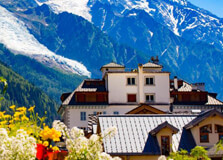
The Chamonix Alpine Museum, or Musée Alpin de Chamonix, is a historical treasure nestled in the heart of Chamonix, one of the most renowned mountain towns in the French Alps. The museum offers visitors an immersive experience into the rich history, culture, and natural beauty of the region. Whether you're a mountaineer, a history enthusiast, or simply someone who appreciates the stunning alpine environment, the museum provides fascinating insights into the area’s heritage and the pioneering explorers who shaped its legacy. How to Reach Chamonix Alpine Museum, Chamonix Located in the town center, the Chamonix Alpine Museum is easily accessible to visitors coming from all parts of Chamonix. Whether you are staying in the town or coming from surrounding areas, the museum is just a short walk from the main train and bus stations. Below are the best ways to reach the museum: By Foot: The museum is located in the heart of Chamonix, making it easily accessible by foot from most places within the town. It's a 10-15 minute walk from the Chamonix train and bus stations. By Public Transport: Chamonix has an efficient public transport system. You can take a local bus that stops near the museum. From the Chamonix bus or train stations, it’s a short walk to the museum. By Car: While driving is not the most convenient option for visitors staying within Chamonix, you can still reach the museum by car. There is limited parking available in the town center, so it's recommended to park in a nearby parking lot and walk to the museum. Weather in Chamonix Chamonix has an alpine climate with four distinct seasons. The weather conditions vary greatly depending on the time of year, which can impact your experience at the museum and the surrounding areas: Summer (June - August): The summer months bring mild to warm temperatures, averaging between 15°C and 25°C (59°F to 77°F) in the town. This is the best time to visit the museum, as the weather is pleasant, and the town is buzzing with tourists enjoying hiking, mountaineering, and other outdoor activities. Higher altitudes can be cooler. Autumn (September - November): Autumn in Chamonix is cooler, with temperatures ranging from 5°C to 15°C (41°F to 59°F). The stunning colors of the fall foliage make it a great time for scenic walks. The museum is less crowded during this time, offering a peaceful visit. Winter (December - February): Winter brings cold temperatures, with snow covering the region. Temperatures in Chamonix can drop to -5°C (23°F), and the town becomes a haven for ski enthusiasts. While the museum is still open during winter, be sure to check the weather conditions as snow can make walking to the museum a bit challenging. Spring (March - May): Spring is characterized by moderate temperatures and occasional rainfall. Temperatures range between 10°C and 15°C (50°F to 59°F). It is less crowded compared to summer, making it a great time to visit the museum if you prefer a quieter experience. Timing and Opening Hours The Chamonix Alpine Museum is typically open year-round, but its hours of operation vary by season. The museum usually follows the following schedule: Summer (June to September): The museum is open every day from 10:00 AM to 6:00 PM, making it convenient for visitors to explore after a day of outdoor activities. Winter (December to March): During the winter, the museum generally opens from 10:00 AM to 12:30 PM and then again from 2:00 PM to 5:00 PM, allowing you to visit in the afternoon after spending the morning on the slopes. Spring and Autumn (April - May, October - November): During the off-season, the museum may have reduced hours, typically from 10:00 AM to 5:00 PM, but it’s always a good idea to check ahead for updates. Why is Chamonix Famous? Chamonix is famous worldwide for being a mountaineering hub and the gateway to Mont Blanc, the highest peak in Western Europe. The town is renowned for its extreme outdoor activities, including skiing, snowboarding, hiking, and mountaineering. In addition to its outdoor appeal, Chamonix is rich in history, culture, and art, and the Chamonix Alpine Museum is a prime example of the town’s historical significance in the alpine world. The museum showcases the fascinating history of mountain exploration, the origins of the first alpine climbing expeditions, and the evolution of the mountain sports that make Chamonix famous today. History and Architecture The museum itself is housed in a beautiful 18th-century building, which was originally a private residence before being transformed into a museum. The building’s architecture reflects the alpine charm of the region, with classic features that highlight Chamonix’s cultural heritage. Inside, the museum displays a vast collection of artifacts, photographs, and exhibits that showcase the pioneering mountaineers and explorers who conquered the Alps, as well as the natural history of the region. The exhibits are organized into thematic sections, focusing on the history of Chamonix, alpine climbing, and the local flora and fauna. The museum also tells the story of Chamonix’s role as a key location in the development of mountaineering and its impact on the sport’s global popularity. Additionally, there are temporary exhibits that highlight modern mountaineering techniques and technology. Things to Do at Chamonix Alpine Museum During your visit to the museum, you can: Explore the Exhibits: Discover artifacts from the earliest climbing expeditions, tools used by legendary mountaineers, and photographs of historic moments in Chamonix’s mountaineering history. Learn About Local Flora and Fauna: The museum also features exhibits on the region’s unique biodiversity, including animals and plants found in the Chamonix Valley and Mont Blanc massif. Watch Documentaries: The museum occasionally hosts film screenings related to the history of Chamonix and mountaineering, allowing you to further immerse yourself in the subject matter. Take Guided Tours: Consider taking a guided tour for a more in-depth exploration of the exhibits, with expert insights into the history and culture of the Alps. Fun Facts and Tips About Chamonix Alpine Museum Did You Know? Chamonix was the site of the first-ever Winter Olympics in 1924. It remains one of the world’s most famous mountaineering destinations. Tip: If you’re visiting during the peak summer months, arrive early to avoid the crowds. Also, wear comfortable shoes, as the museum can be a bit crowded and the streets outside are cobbled. Entry and Visit Details The Chamonix Alpine Museum is generally affordable to visit, with reasonable entry fees. The museum often offers discounts for students, children, and groups. Make sure to check for any special offers or seasonal discounts when planning your visit. In conclusion, the Chamonix Alpine Museum is a must-see for anyone interested in the history, culture, and natural beauty of Chamonix and the surrounding Alps. With its fascinating exhibits, beautiful architecture, and prime location in the heart of Chamonix, it’s the perfect way to gain a deeper understanding of the region’s legacy.
Explore More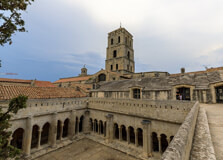
The Musée des Beaux-Arts d'Angers is one of the most significant art museums in the Loire Valley. Located in the historic city of Angers, this museum showcases an impressive collection of art that spans from the Renaissance to the modern era. The museum is housed in a former bishop's palace, offering both a remarkable art collection and beautiful architecture. Visitors come to experience not only the artwork but also the rich history of the building itself. How to Reach Musée des Beaux-Arts d'Angers Getting to the Musée des Beaux-Arts d'Angers is straightforward, as it is situated in the heart of the city. Here's how to reach the museum: By Train: The closest major train station is Gare d'Angers Saint-Laud, which is approximately a 10-minute walk to the museum. High-speed TGV trains connect Angers to Paris, Nantes, and other cities. By Bus: Several bus lines serve the city center and have stops near the museum. You can easily reach the museum by bus from various parts of Angers. By Car: If you are traveling by car, there are several public parking lots around the museum, including parking facilities at Place du Ralliement and nearby streets. Weather in Angers Angers enjoys a temperate climate with mild winters and warm summers, making it an ideal year-round destination. The best time to visit the Musée des Beaux-Arts d'Angers is in the spring and autumn when the weather is pleasant and perfect for walking around the city. In summer, temperatures can range from 22°C to 28°C (72°F to 82°F), while winter temperatures are generally mild, around 2°C to 8°C (36°F to 46°F). Rain is common during the autumn and winter months, so it is advisable to bring an umbrella if visiting during those times. Timing and Opening Hours The Musée des Beaux-Arts d'Angers is open to the public year-round, though its opening hours may vary depending on the season and special events. Below are the usual opening hours: Monday: Closed Tuesday to Sunday: 10:00 AM - 6:00 PM It is always a good idea to check the museum's official website for any changes in hours or special events, especially during public holidays or when temporary exhibitions are held. Why is Musée des Beaux-Arts Famous in Angers? The Musée des Beaux-Arts d'Angers is famous for its extensive and diverse art collection, which spans many centuries and art movements. It is one of the key cultural institutions in Angers, and some of the reasons for its popularity include: Exceptional Art Collection: The museum houses works by renowned artists such as Delacroix, Picasso, Monet, and Rodin. Its collection includes paintings, sculptures, decorative arts, and drawings, making it a treasure trove for art lovers. Rich History: The museum is located in a former bishop's palace, which adds to its historical and architectural appeal. Temporary Exhibitions: The museum regularly hosts temporary exhibitions featuring both contemporary and historical works of art, further enhancing its reputation as a cultural hub. Entry and Visit Details Visiting the Musée des Beaux-Arts d'Angers is an enriching experience for art lovers. The entry details are as follows: Entry Fee: The standard entry fee is €7 for adults. There are discounted rates available for students, seniors, and groups. Admission is free for children under 18 and for EU residents under 26. Guided Tours: The museum offers guided tours in both French and English. These tours are led by knowledgeable guides who provide detailed insights into the museum's collection and history. Tours typically last about 1 to 1.5 hours. Special Exhibitions: Temporary exhibitions may have an additional entry fee, so it’s best to check the museum’s website for details on upcoming exhibitions and events. History and Architecture The Musée des Beaux-Arts d'Angers is housed in a historic building that was once the residence of the bishops of Angers. The building itself is an architectural marvel, blending elements of the Renaissance and Classical styles. The museum was officially opened to the public in 1796, making it one of the oldest art museums in France. The architecture of the museum is as impressive as its collection. Visitors can admire the grand staircase, the elegant courtyards, and the beautifully decorated rooms, which have been carefully preserved. The museum’s layout is designed to guide visitors through the different historical periods and art movements, creating a seamless experience as you move through the centuries of art. Things to Do at Musée des Beaux-Arts d'Angers There are many things to do at the Musée des Beaux-Arts d'Angers for art enthusiasts, history buffs, and those looking to appreciate beautiful architecture: Explore the Art Collection: Spend time admiring masterpieces from various periods, including the Renaissance, Baroque, and modern art. Look for works by Delacroix, Monet, and Picasso, among others. Visit Temporary Exhibitions: The museum frequently hosts temporary exhibitions featuring contemporary artists or specific art movements. These exhibitions often provide a deeper understanding of specific genres or themes in art. Take a Guided Tour: To gain a deeper understanding of the museum’s collection and history, consider joining a guided tour. This will provide valuable insights and historical context for the artwork on display. Admire the Architecture: Don’t forget to explore the museum’s beautiful architecture, including the grand staircase, the courtyards, and the historic rooms that house the art. Interesting Facts about Musée des Beaux-Arts d'Angers The museum is located in the former Palais des Archevêques d'Angers (Palace of the Archbishops of Angers), which was built between the 15th and 18th centuries. The museum has an impressive collection of works from the 19th and 20th centuries, particularly focusing on French artists like Eugène Delacroix and Jean-Auguste-Dominique Ingres. The museum’s collection includes over 3,500 works of art, including paintings, sculptures, and decorative arts. One of the highlights of the museum is its collection of works by the French artist Gustave Courbet, known for his realism style. Tips for Visiting Musée des Beaux-Arts d'Angers Check for Temporary Exhibitions: The museum regularly holds temporary exhibitions, which might have a separate entry fee. Be sure to check ahead for these exhibitions to make the most of your visit. Visit Early: To avoid crowds, it’s a good idea to visit the museum early in the morning, especially on weekends. Wear Comfortable Shoes: You will likely be walking and standing for extended periods, so comfortable footwear is recommended. Photography: Photography is generally allowed in most parts of the museum, but be sure to check any signage about restrictions, especially during temporary exhibitions. Download the Museum App: The museum offers an app that provides information on the artwork and guided tours. It’s a great tool to enhance your visit.
Explore More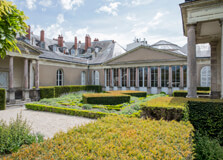
Muséum d'Histoire Naturelle d'Angers
The Muséum d'Histoire Naturelle d'Angers (Museum of Natural History) is one of the most important cultural and educational institutions in Angers, France. Located in a beautiful 18th-century building, the museum houses an impressive collection of natural history exhibits, ranging from paleontology and zoology to botany and geology. It's a fantastic place for families, students, and anyone interested in the wonders of the natural world. The museum's focus is not just on exhibiting artifacts but also on educating the public about the natural environment and the importance of conservation. How to Reach Muséum d'Histoire Naturelle d'Angers The museum is centrally located in Angers, making it easily accessible from all parts of the city. Here’s how you can reach the museum: By Train: The main train station, Gare d'Angers Saint-Laud, is about 15 minutes on foot from the museum. High-speed TGV trains from Paris, Nantes, and other major cities stop at this station. By Bus: Several local bus lines serve the museum area. The nearest bus stop is Place du Ralliement, located just a short walk from the museum. By Car: Angers has good road access, and the museum can be easily reached by car. There are parking lots nearby, including a public car park near the city center, which is convenient for museum visitors. Weather in Angers Angers has a temperate oceanic climate, which is great for outdoor exploration and museum visits. Here's what you can expect throughout the year: Spring (March to May): Spring in Angers brings mild temperatures, ranging from 10°C to 15°C (50°F to 59°F). This is the best time for a relaxed visit to the Muséum d'Histoire Naturelle, as the weather is pleasant and the museum’s botanical collections are at their best. Summer (June to August): Summer sees warmer temperatures between 22°C and 28°C (72°F to 82°F). While the museum is a cool refuge from the heat, summer is also a great time for outdoor activities around Angers. Autumn (September to November): Fall brings crisp air with temperatures around 12°C to 17°C (54°F to 63°F). The foliage in the city and the museum’s botanical garden changes colors, making it a visually stunning time to visit. Winter (December to February): Winters are cold but relatively mild, with temperatures hovering between 3°C and 8°C (37°F to 46°F). The museum remains open year-round, and winter visits are peaceful and quiet, with fewer tourists around. Timing and Opening Hours The Muséum d'Histoire Naturelle d'Angers is open throughout the week, except on Mondays when it is closed. It typically follows these opening hours: Tuesday to Sunday: 10:00 AM - 6:00 PM The museum may be closed on public holidays, so it's always a good idea to check the website or call ahead for updates, especially during special events or temporary exhibitions. Why is Muséum d'Histoire Naturelle Famous in Angers? The Muséum d'Histoire Naturelle d'Angers is famous for its diverse and rich collection of natural history artifacts, making it one of the most important museums in the region. Some reasons for its popularity include: Extensive Collections: The museum is home to over 1.5 million specimens in various fields of natural history, from fossils and minerals to taxidermy and plants. It is a great place for both casual visitors and serious researchers. Educational Value: The museum offers engaging exhibits that are both informative and fun. It focuses on educating visitors about environmental conservation and the biodiversity of the planet. Scientific Research: The museum is not just a space for displaying objects but also a center for scientific research, particularly in the fields of geology, paleontology, and botany. Entry and Visit Details The Muséum d'Histoire Naturelle d'Angers offers affordable entry fees, making it accessible to visitors of all ages. Below are the key details regarding entry and visiting: General Entry Fee: The standard entry fee is €5 for adults. Reduced rates are available for students, seniors, and groups, with tickets priced at around €3-€4. Free Entry: Admission is free for children under 12, and there are occasional free entry days, usually during national museum events or cultural festivals. Guided Tours: The museum offers guided tours (both in French and English), which provide a deeper understanding of the exhibits and their significance. These tours typically last about 1 hour and are available for an additional fee. Workshops and Events: The museum hosts a variety of educational workshops, conferences, and temporary exhibitions. It's worth checking their calendar for any special events during your visit. History and Architecture The Muséum d'Histoire Naturelle d'Angers was founded in 1806 and has since grown to house a diverse array of specimens. It is housed in a beautiful building that dates back to the late 18th century, reflecting the architectural style of the period. The museum's architecture is a blend of classical and neoclassical influences, with elegant stonework and spacious interiors that were designed to accommodate large collections. The museum's galleries are spread across several floors, with rooms dedicated to different areas of natural history, such as paleontology, zoology, and geology. The building also features a small botanical garden, which complements the museum’s focus on plants and the natural environment. Things to Do at Muséum d'Histoire Naturelle d'Angers At the Muséum d'Histoire Naturelle d'Angers, there is a wide range of activities for visitors of all ages: Explore the Exhibits: Walk through the museum’s permanent exhibits, which include fossils, taxidermy animals, geological specimens, and botanical displays. Participate in Workshops: Join one of the museum’s interactive workshops, where you can learn more about various aspects of natural history, such as fossil identification or plant conservation. Attend Temporary Exhibitions: The museum regularly hosts temporary exhibitions focused on specific themes or new scientific discoveries. These exhibits often feature the work of contemporary scientists or natural history photographers. Visit the Botanical Garden: Take a stroll through the museum’s garden, which features a variety of plants native to the Loire Valley and beyond. It’s a peaceful space perfect for relaxation and learning about local flora. Interesting Facts about Muséum d'Histoire Naturelle d'Angers The museum’s collection includes over 1.5 million specimens, making it one of the most extensive natural history collections in the Loire region. The museum is home to a large number of fossils, some of which are millions of years old, providing a fascinating glimpse into prehistoric life. The building that houses the museum was originally a mansion, and it has been carefully preserved to retain its historical charm while accommodating the museum’s exhibits. In addition to its permanent exhibits, the Muséum d'Histoire Naturelle hosts a range of educational activities, including school visits, special events, and workshops designed to inspire future generations of scientists and nature lovers. Tips for Visiting Muséum d'Histoire Naturelle d'Angers Wear Comfortable Shoes: The museum has multiple floors and galleries, so be sure to wear comfortable shoes for walking around. Check for Special Exhibitions: The museum frequently hosts temporary exhibits. Check the website for any current or upcoming exhibits that might interest you. Take a Guided Tour: Consider taking a guided tour to gain a deeper understanding of the exhibits and their significance. Tours can be especially informative for those interested in natural history. Plan for a Few Hours: Plan to spend at least 1.5 to 2 hours exploring the museum, especially if you're interested in reading all the information and learning about the exhibits in detail. Bring Kids: The museum is family-friendly and offers plenty of interactive exhibits for children, making it a great destination for families.
Explore More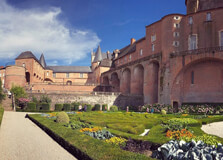
Muséum de Toulouse, also known as the Toulouse Museum of Natural History, is one of the oldest and most renowned museums in France. Established in 1796, the museum is dedicated to the natural sciences, showcasing the rich biodiversity, geology, and environmental heritage of the region. With its impressive collection of scientific exhibits, it offers visitors an immersive experience into the natural world and serves as a valuable resource for research and education. How to Reach Muséum de Toulouse Located in the heart of Toulouse, the Muséum de Toulouse is easily accessible by various modes of transportation: By Car: The museum is located at 35 Allée Jules Guesde, 31400 Toulouse. There are several parking options nearby, including street parking and parking lots in the vicinity of the museum. By Public Transport: Toulouse’s public transport network is efficient and well-connected to the Muséum de Toulouse. The nearest metro station is Cartoucherie (Line A), which is a short walk from the museum. You can also take bus routes 70, 72, and 110 that stop near the museum. By Bicycle: Toulouse is a bike-friendly city with many cycling paths. The museum is accessible by bike, and there are bike racks available for visitors. Weather in Toulouse Toulouse has a Mediterranean climate, which makes it an ideal destination for most of the year. The weather can significantly affect your visit to the Muséum de Toulouse, especially since many exhibitions are housed outdoors and in botanical gardens: Spring (March to May): Spring in Toulouse is mild with average temperatures ranging from 12°C to 20°C (54°F to 68°F). This season is perfect for exploring the museum's outdoor exhibitions and gardens. Summer (June to August): Summer temperatures can reach as high as 35°C (95°F). This is a great time to visit the indoor exhibitions, though outdoor sections may feel hot during midday. Early morning or late afternoon visits are recommended for outdoor activities. Autumn (September to November): Autumn offers cooler temperatures between 15°C and 25°C (59°F to 77°F), making it a great time to explore both the indoor and outdoor sections of the museum. Winter (December to February): Winter in Toulouse is mild, with temperatures averaging between 5°C and 12°C (41°F to 54°F). While outdoor exhibits may be less pleasant in the cold, the museum’s indoor collections remain fully accessible and comfortable. Timings and Opening Hours The Muséum de Toulouse is open throughout the week, but its hours may vary depending on the season. It’s always a good idea to check the museum’s official website for updated timings before your visit. General Opening Hours: The museum is typically open every day from 10:00 AM to 6:00 PM, with occasional closures on Mondays or holidays. Special Events: The museum hosts various temporary exhibitions, workshops, and events, so be sure to check the schedule for special timings or closures related to these activities. Why Famous for Toulouse? The Muséum de Toulouse is famous for several reasons: Rich History: The museum’s history spans over two centuries, with its foundation in 1796. It is one of the oldest natural history museums in France, boasting a long-standing commitment to education and research. Diverse Collections: The museum houses over 2 million specimens in its collections, covering a wide range of disciplines, including biology, paleontology, anthropology, and geology. Highlights include fossils, animal taxidermy, minerals, and botanical specimens. Botanical Gardens: The museum features beautiful outdoor botanical gardens that house rare plants, providing a peaceful escape and an opportunity to learn about various plant species. These gardens are ideal for visitors who want to experience nature firsthand. Entry and Visit Details Visiting the Muséum de Toulouse is an enriching experience, offering insight into the natural world. Here’s what you need to know: Entry Fees: Entry to the Muséum de Toulouse is affordable. The general entry fee is usually around 8-10 euros, with discounts for students, seniors, and children. Admission is free for children under 6 years of age. Guided Tours: The museum offers guided tours that provide in-depth information about the exhibits. You can book a guided tour online or at the museum. Tours are available in multiple languages, including English, French, and Spanish. Family-Friendly: The museum is an excellent destination for families. There are interactive exhibits designed for children, and the museum often runs special educational activities and workshops for younger visitors. History and Architecture of Muséum de Toulouse The Muséum de Toulouse is housed in a beautiful historic building that reflects the city's architectural grandeur. The museum's original structure dates back to the early 19th century, and the building itself is a fine example of classical architecture. The museum was initially founded to foster scientific knowledge and understanding of natural history. Throughout its history, the Muséum de Toulouse has undergone several expansions and renovations, with notable additions such as the construction of the Jardin des Plantes (Botanical Garden) and new exhibition halls that enhance the visitor experience. The museum's design seamlessly integrates scientific exhibits with aesthetic appeal, making it both a hub for learning and a visually captivating place to visit. Things to Do at Muséum de Toulouse The Muséum de Toulouse offers a variety of activities that make it an exciting and educational destination for all types of visitors: Explore the Exhibits: The museum’s exhibits are divided into thematic sections such as paleontology, zoology, and ethnography. Don't miss the famous collection of fossils, stuffed animals, and rare minerals. Stroll Through the Botanical Gardens: The museum’s gardens are home to a diverse range of plants from around the world, offering a beautiful and tranquil environment for a walk. The gardens also feature themed sections, such as the Mediterranean garden and the tropical plants section. Engage in Interactive Exhibits: Many exhibits in the museum are interactive, allowing visitors to touch, play, and learn through hands-on experiences. This makes it especially popular with families and school groups. Attend Special Events: The museum regularly organizes workshops, lectures, and events that focus on specific scientific themes. These events offer a deeper understanding of the natural world and allow you to engage with experts in the field. Facts About Muséum de Toulouse The Muséum de Toulouse houses more than 2 million specimens, ranging from fossils to plants, animals, and minerals. The museum is a part of the Museum of Natural History Network in France and is considered one of the most important centers for research in the field of natural sciences. In addition to its permanent collections, the museum hosts rotating temporary exhibitions that explore various aspects of natural history and science. Tips for Visiting Muséum de Toulouse Check the Schedule: Before your visit, check the museum's website for special events, temporary exhibitions, or workshops that may interest you. Wear Comfortable Clothing: The museum is quite large, so be sure to wear comfortable shoes and clothing for exploring the various exhibitions and gardens. Bring Water: If you plan to explore the outdoor gardens, especially during the summer months, be sure to bring a bottle of water. Plan for a Half-Day Visit: Depending on your interest in the exhibits, plan to spend at least 2-3 hours at the museum to fully enjoy all the exhibits and activities.
Explore More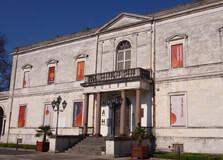
The Musée des Arts et Métiers in Cognac is a fascinating museum dedicated to showcasing the history and development of various crafts and industries, particularly in the Cognac region. Located in the heart of the town, this museum offers a unique look into the craftsmanship, technological advances, and artistry that have shaped Cognac into the renowned brandy-producing town it is today. Visitors can explore a range of exhibits that cover everything from distillation techniques to regional trades and craftsmanship. How to Reach Musée des Arts et Métiers The museum is centrally located in Cognac, making it easily accessible for both locals and tourists. Here are some of the best ways to reach the museum: By Train: The Cognac train station is approximately a 10-minute walk from the Musée des Arts et Métiers. Trains from major cities such as Angoulême or Bordeaux are available, making it convenient for visitors coming from nearby areas. By Car: If you are traveling by car, the museum is located in the town center with nearby parking facilities. You can use the town’s main roads to reach the museum, and there are usually parking spaces around the museum for visitors. On Foot: If you’re staying in the town center, you can easily walk to the museum. It is within walking distance from other popular attractions, including the town’s central square and the Charente River. By Bicycle: Cognac is a bike-friendly town, and cycling to the museum is a pleasant option. The museum offers bike racks near the entrance, so you can easily lock your bike while exploring the exhibits. Weather in Cognac Cognac experiences a temperate maritime climate, which makes it an excellent year-round destination. The weather is mild and pleasant, ideal for sightseeing and exploring museums. Here’s a breakdown of the weather: Spring (April to June): The weather is mild, with temperatures ranging from 12°C to 22°C (54°F to 72°F). This is a great time to visit, as the town’s gardens and parks are in full bloom. Summer (July to August): Summers are warm, with temperatures ranging from 20°C to 30°C (68°F to 86°F). It’s the peak tourist season, so the museum can be a cool, quiet refuge from the heat. Autumn (September to November): Fall brings cooler temperatures, with highs around 10°C to 20°C (50°F to 68°F). The weather is still pleasant, and the fall colors add to the beauty of the region. Winter (December to February): Winters are mild but can be chilly, with temperatures between 5°C and 10°C (41°F to 50°F). The museum remains a great indoor activity during the colder months. Timing of Musée des Arts et Métiers The museum has specific opening hours, so it’s essential to plan your visit accordingly: General Opening Hours: The Musée des Arts et Métiers is typically open from 10:00 AM to 6:00 PM. It’s open every day except for major holidays. However, hours may vary on public holidays or during special events, so it’s advisable to check the official website before visiting. Best Time to Visit: To avoid crowds, it’s best to visit early in the day or later in the afternoon. If you’re visiting during the summer months, weekdays tend to be quieter than weekends. Why Musée des Arts et Métiers is Famous The Musée des Arts et Métiers is famous for its unique focus on regional craftsmanship and industrial history. The museum provides visitors with a deep insight into the skills, innovations, and technologies that have shaped Cognac and the surrounding Charente region. Some of the key reasons why this museum is notable include: Cognac Production: One of the museum’s highlights is its exhibition on the distillation process used in the production of Cognac brandy. Visitors can learn about the intricate techniques used to create this world-famous spirit. Local Craftsmanship: The museum showcases the traditional crafts of the region, including barrel-making, glassblowing, and other artisanal techniques that have been passed down through generations. Industrial Revolution: The museum also covers the impact of the Industrial Revolution on the region, displaying machines, tools, and innovations that shaped local industries. Interactive Exhibits: With interactive displays and hands-on exhibits, the museum allows visitors to engage with the history of craftsmanship and innovation in a fun and informative way. Entry and Visit Details about Musée des Arts et Métiers Visiting the Musée des Arts et Métiers is a rewarding experience, especially for those interested in local history and craftsmanship. Here are some essential details for planning your visit: Entry Fees: The entrance fee for the museum typically ranges from €5 to €10, depending on the type of ticket (adult, student, family, etc.). Some discounts may apply for groups or senior citizens. Guided Tours: The museum offers guided tours in several languages, providing in-depth information about the exhibits and the history behind them. These tours are available for an additional fee and can be booked in advance. Special Exhibitions: The museum often hosts temporary exhibitions on specific topics related to arts, crafts, and industrial innovation. Be sure to check for any special exhibitions during your visit. Accessibility: The museum is wheelchair accessible, and there are facilities for people with reduced mobility. It’s recommended to contact the museum ahead of time if you need special accommodations. History and Architecture of Musée des Arts et Métiers The Musée des Arts et Métiers in Cognac is housed in a historic building that reflects the town's rich industrial and cultural heritage. The building was originally constructed in the 18th century, and over the years, it has been expanded and renovated to accommodate the growing collection of exhibits. The museum’s architecture is a blend of traditional French design, with elegant facades, high ceilings, and classic stonework that create a perfect setting for the displays inside. The interior of the museum is thoughtfully organized, with rooms dedicated to different aspects of local craftsmanship, including exhibits on tools, distillation equipment, and artisan goods. The layout is designed to offer visitors a chronological journey through the history of craftsmanship in Cognac and the surrounding area. Things to Do at Musée des Arts et Métiers There is much to see and do at the Musée des Arts et Métiers, making it a great destination for history lovers, families, and anyone with an interest in craftsmanship. Here are some of the key activities: Explore the Exhibits: The museum features a wide range of permanent exhibits covering everything from the distillation of Cognac to local crafts and industrial history. Take your time to explore the artifacts and learn about the region’s rich history. Interactive Displays: The museum has several hands-on exhibits that allow visitors to engage with the displays. Try your hand at some traditional crafts or interact with historical machines to better understand the processes behind them. Guided Tours: A guided tour is a fantastic way to learn more about the history of the region and the exhibits on display. Knowledgeable guides can provide fascinating insights that you might otherwise miss. Attend Workshops: Occasionally, the museum offers workshops on traditional crafts, where you can learn how to create your own handmade items or gain practical experience in skills like barrel-making or glassblowing. Interesting Facts about Musée des Arts et Métiers The museum’s collection includes over 2,000 objects related to regional craftsmanship and industrial history, making it one of the most comprehensive museums of its kind in the region. The museum’s focus on the history of Cognac distillation makes it unique, as it delves deep into the technological advances and innovations behind the production of one of the world’s most famous spirits. In addition to the permanent exhibits, the museum frequently hosts temporary exhibitions that focus on contemporary crafts, providing a platform for modern artists and artisans to showcase their work. The building itself has been an integral part of Cognac’s history, having been used for various purposes before becoming a museum, including serving as a school and a cultural center. Tips for Visiting Musée des Arts et Métiers Check the Calendar: Before your visit, check the museum’s website for any upcoming temporary exhibitions or special events, such as workshops or guided tours. Wear Comfortable Shoes: There is a lot to explore within the museum, so be sure to wear comfortable shoes for walking and standing. Plan for a Guided Tour: If you want a deeper understanding of the exhibits, consider booking a guided tour in advance to enhance your visit. Bring a Camera: The museum offers plenty of photo opportunities, especially with its fascinating artifacts and historic machinery, so don’t forget your camera. Conclusion The Musée des Arts et Métiers in Cognac is an incredible destination for anyone interested in the history of craftsmanship, distillation, and local industry. With its fascinating exhibits, interactive displays, and beautiful historic architecture, the museum offers a deep dive into the skills and innovations that have shaped the town of Cognac and the surrounding region. Whether you’re a history enthusiast, a craft lover, or simply looking for an interesting place to visit, the Musée des Arts et Métiers is a must-see attraction in Cognac.
Explore More